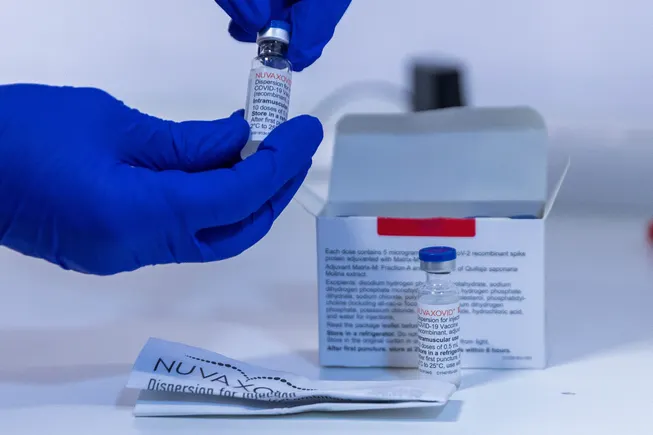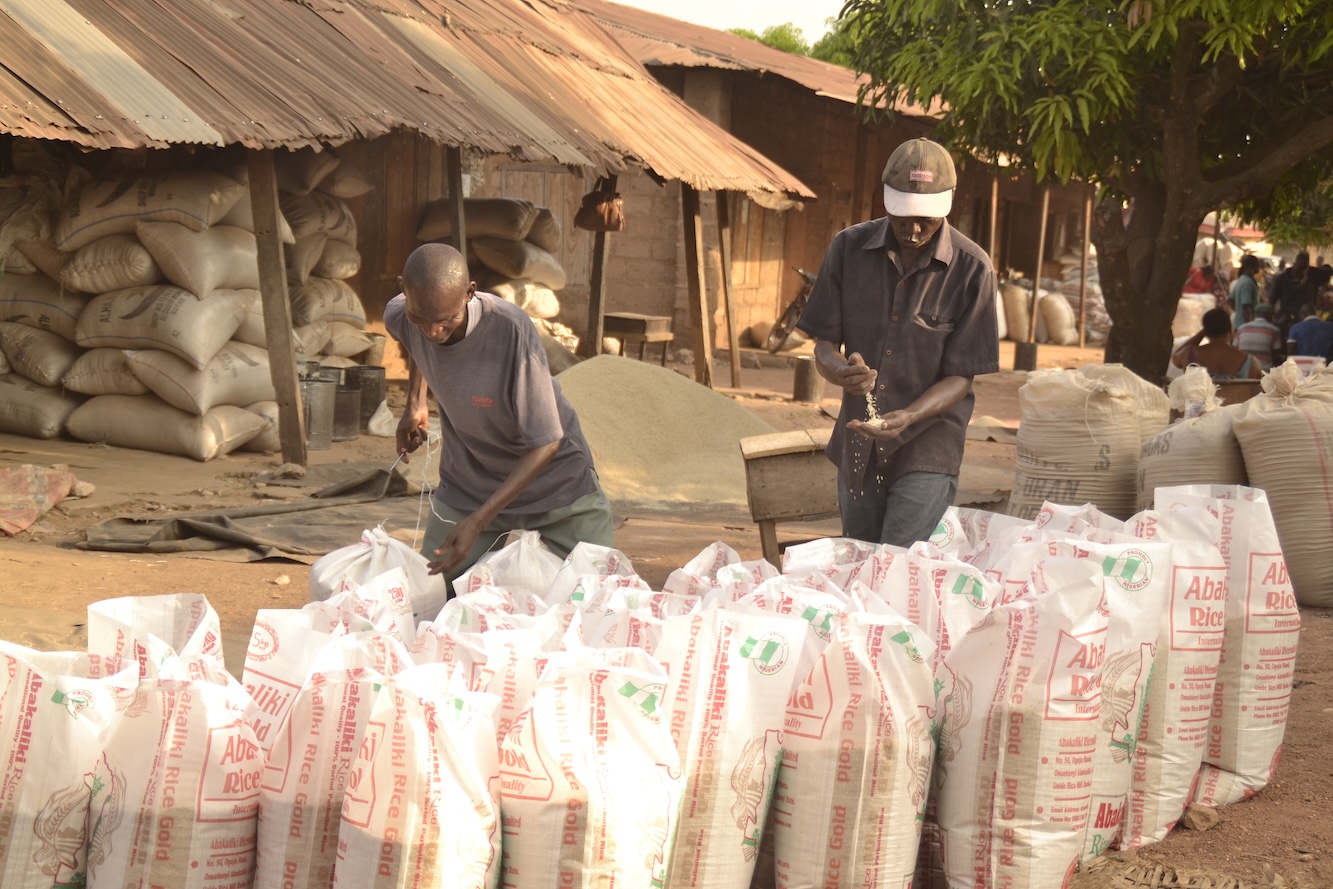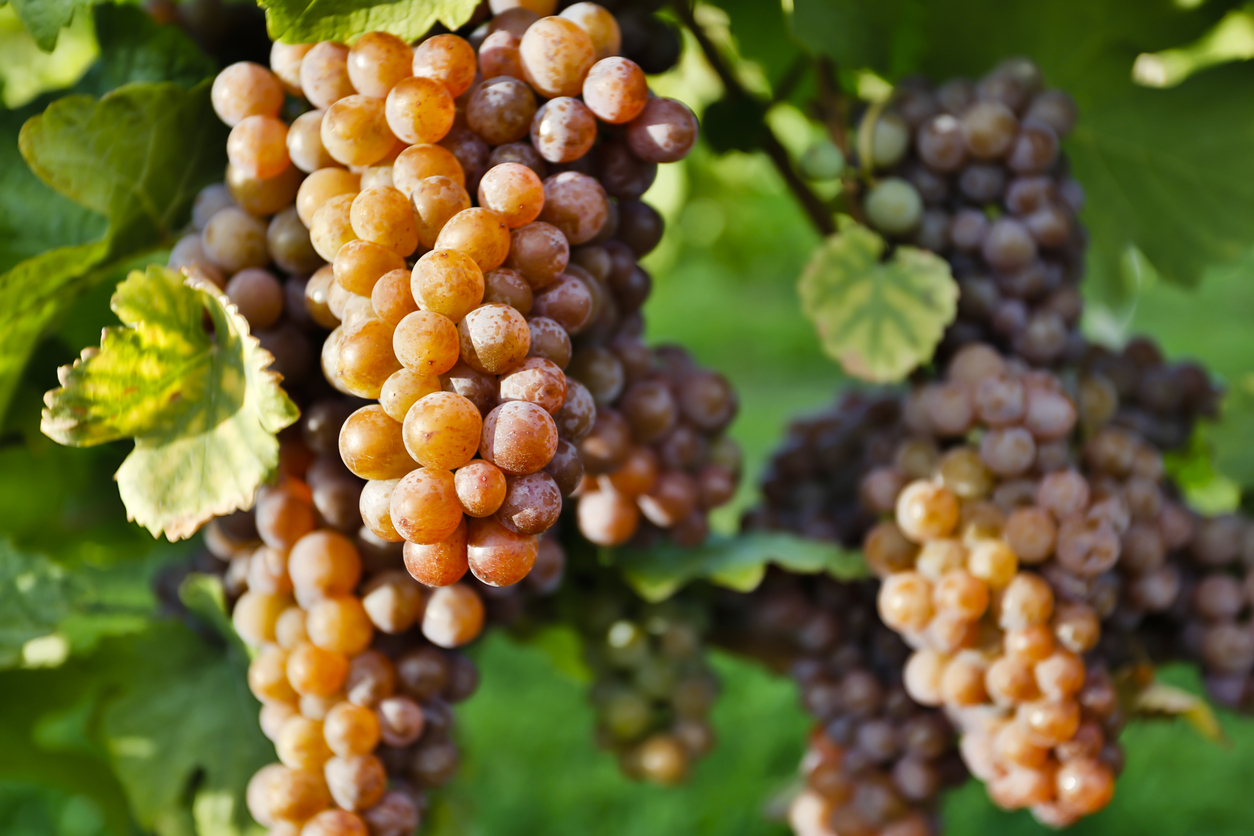At Nuss Bar in Bangkok, award-winning bartender Ronnaporn Kanivichaporn is elevating overlooked local spirits with inventive cocktails. Nimmi Malhotra finds out more.
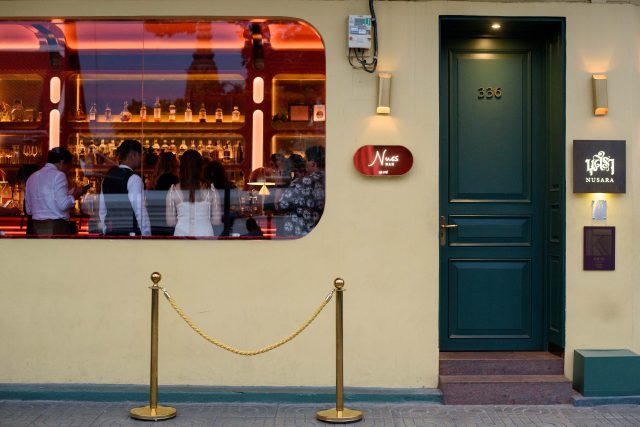
Indigenous Thai spirits remain largely unfamiliar to audiences outside of Thailand. Made from local produce like rice, palm sugar, native fruits and even coconut flowers, these distilled spirits are quietly undergoing a renaissance, thanks to a wave of innovative bartenders spotlighting local terroir.
Award-winning mixologist Ronnaporn Kanivichaporn of Mahaniyom Cocktail Bar is one of the proponents, championing the spirits at Nuss Bar, which he co-owns with chef Thitid Tassanakajohn (Ton) in Bangkok’s renowned Tha Tien district.
“I started to use Thai spirit in Mahaniyom first,” says Kanivichaporn, referring to his first Bangkok venture. “But I found it matched much better with the concept of Nuss and Nusara.”
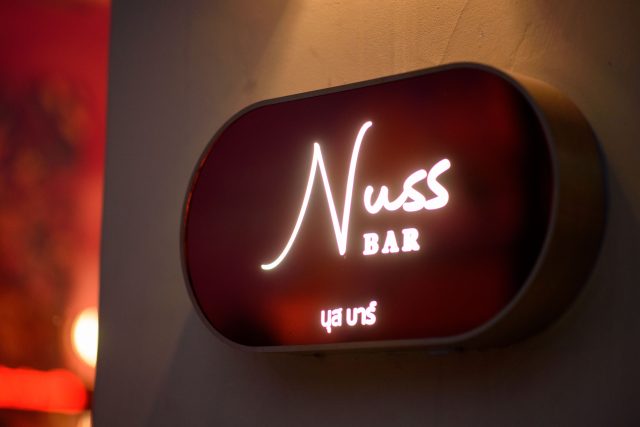 Nuss Bar
Nuss Bar is a cocktail lounge that acts as a prelude to fine dining at Nusara, where Chef Ton pays homage to his Thai roots, putting a creative spin on his grandmother’s recipes. Both establishments share the same building.
The bar’s philosophy leans heavily into hyper-localisation, with a cocktail menu celebrating Thailand’s biodiversity. Drinks are infused with ripe mango, gac fruit (a spiny melon-like fruit rich in antioxidants), bitter neem honey, and deeply pigmented maoberry. These local elements are paired with little-known Thai spirits rarely seen outside the country.
One signature cocktail, the Lychee Gimlet, stars Mork Mung Muang lychee spirit, a fragrant liqueur distilled in the remote mountain village of Mae Hong Son. Another standout, the Satojito, is a vibrant fusion of Devanom pure rice sato—a sweet rice wine from the Isaan region — blended with mint tea-infused vodka.
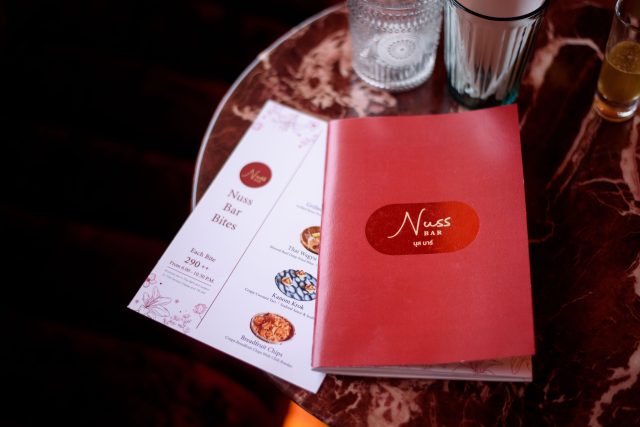
These inventive cocktails do more than impress on their own — they also echo the essential balance of Thai cuisine, marrying sweet, sour, salty, and savoury in every sip. The bar’s offerings were recently featured in a multi-course dinner collaboration, where each drink was paired with a dish by Chef Ton, the culinary force behind Nusara and Le Du.
“I followed Chef Ton’s dish,” says Kanivichaporn, sharing his process. “But I don’t repeat the flavour. If he adds herbs and spices to his dish, I like to use fruit in the pairing cocktail. If he uses ginger in his sauce, I will choose honey instead, as the two complement each other.”
The dinner was part of Asian Sensation, a new fine dining and cocktail festival curated by culinary historian Roy Yerushalmi. Billed as a “disruptive event,” the festival seeks to elevate the stature of cocktails – an ambition embodied in the craftsmanship of Kanivichaporn and Chef Ton.

Local spirits with an international audience
In recent times, Thailand has harnessed the power of local sugarcane to create international spirits like Chalong Bay Rum and Phraya Rum. However, the indigenous spirits are largely overlooked.
As global interest in craft spirits continues to grow, these indigenous Thai distillations are drawing some interest. However, for now, the spirits are
confined to Thailand thanks to the country’s restrictive distillation licensing rules, which tend to favour larger producers. Export channels are open only to distilleries that meet criteria like production of more than 300,000 litres a day, among other formalities, a threshold few small-scale producers can meet.
Despite the regulatory barriers, nearly 100 micro-distilleries are quietly operating in Thailand, producing innovative spirits like Taiguo Mijiu (rice wine), AiKham Brown Rice Spirit and Asura Thai vodka. Their creations remain largely confined to local bars and restaurants. But through the creative efforts of Kanivichaporn and international collaborations such as Yerushalmi’s Asian Sensation festival, it might be the right time for these forgotten spirits to claim their limelight.
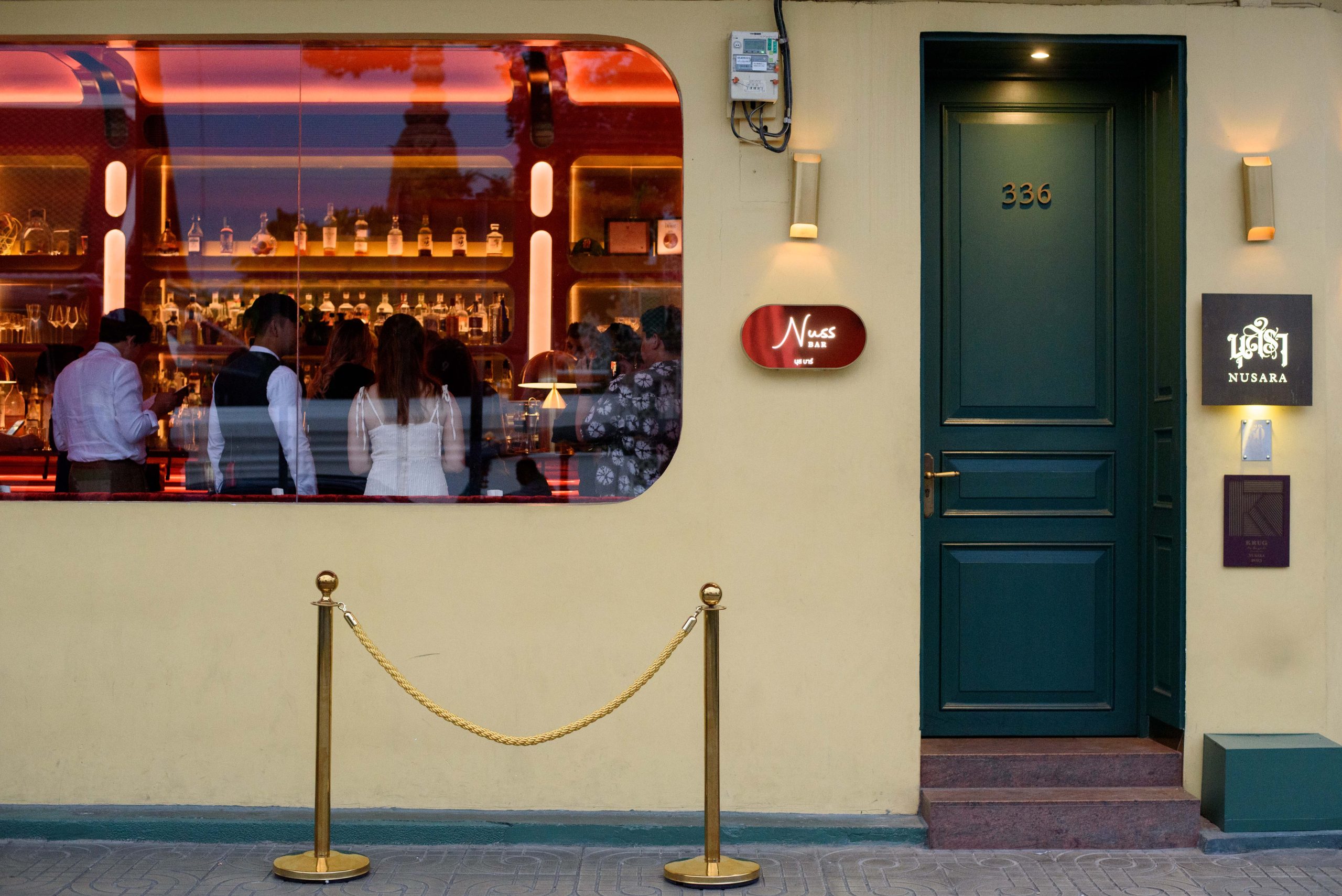
 Indigenous Thai spirits remain largely unfamiliar to audiences outside of Thailand. Made from local produce like rice, palm sugar, native fruits and even coconut flowers, these distilled spirits are quietly undergoing a renaissance, thanks to a wave of innovative bartenders spotlighting local terroir.
Award-winning mixologist Ronnaporn Kanivichaporn of Mahaniyom Cocktail Bar is one of the proponents, championing the spirits at Nuss Bar, which he co-owns with chef Thitid Tassanakajohn (Ton) in Bangkok’s renowned Tha Tien district.
“I started to use Thai spirit in Mahaniyom first,” says Kanivichaporn, referring to his first Bangkok venture. “But I found it matched much better with the concept of Nuss and Nusara.”
Indigenous Thai spirits remain largely unfamiliar to audiences outside of Thailand. Made from local produce like rice, palm sugar, native fruits and even coconut flowers, these distilled spirits are quietly undergoing a renaissance, thanks to a wave of innovative bartenders spotlighting local terroir.
Award-winning mixologist Ronnaporn Kanivichaporn of Mahaniyom Cocktail Bar is one of the proponents, championing the spirits at Nuss Bar, which he co-owns with chef Thitid Tassanakajohn (Ton) in Bangkok’s renowned Tha Tien district.
“I started to use Thai spirit in Mahaniyom first,” says Kanivichaporn, referring to his first Bangkok venture. “But I found it matched much better with the concept of Nuss and Nusara.”
 Nuss Bar is a cocktail lounge that acts as a prelude to fine dining at Nusara, where Chef Ton pays homage to his Thai roots, putting a creative spin on his grandmother’s recipes. Both establishments share the same building.
The bar’s philosophy leans heavily into hyper-localisation, with a cocktail menu celebrating Thailand’s biodiversity. Drinks are infused with ripe mango, gac fruit (a spiny melon-like fruit rich in antioxidants), bitter neem honey, and deeply pigmented maoberry. These local elements are paired with little-known Thai spirits rarely seen outside the country.
One signature cocktail, the Lychee Gimlet, stars Mork Mung Muang lychee spirit, a fragrant liqueur distilled in the remote mountain village of Mae Hong Son. Another standout, the Satojito, is a vibrant fusion of Devanom pure rice sato—a sweet rice wine from the Isaan region — blended with mint tea-infused vodka.
Nuss Bar is a cocktail lounge that acts as a prelude to fine dining at Nusara, where Chef Ton pays homage to his Thai roots, putting a creative spin on his grandmother’s recipes. Both establishments share the same building.
The bar’s philosophy leans heavily into hyper-localisation, with a cocktail menu celebrating Thailand’s biodiversity. Drinks are infused with ripe mango, gac fruit (a spiny melon-like fruit rich in antioxidants), bitter neem honey, and deeply pigmented maoberry. These local elements are paired with little-known Thai spirits rarely seen outside the country.
One signature cocktail, the Lychee Gimlet, stars Mork Mung Muang lychee spirit, a fragrant liqueur distilled in the remote mountain village of Mae Hong Son. Another standout, the Satojito, is a vibrant fusion of Devanom pure rice sato—a sweet rice wine from the Isaan region — blended with mint tea-infused vodka.
 These inventive cocktails do more than impress on their own — they also echo the essential balance of Thai cuisine, marrying sweet, sour, salty, and savoury in every sip. The bar’s offerings were recently featured in a multi-course dinner collaboration, where each drink was paired with a dish by Chef Ton, the culinary force behind Nusara and Le Du.
“I followed Chef Ton’s dish,” says Kanivichaporn, sharing his process. “But I don’t repeat the flavour. If he adds herbs and spices to his dish, I like to use fruit in the pairing cocktail. If he uses ginger in his sauce, I will choose honey instead, as the two complement each other.”
The dinner was part of Asian Sensation, a new fine dining and cocktail festival curated by culinary historian Roy Yerushalmi. Billed as a “disruptive event,” the festival seeks to elevate the stature of cocktails – an ambition embodied in the craftsmanship of Kanivichaporn and Chef Ton.
These inventive cocktails do more than impress on their own — they also echo the essential balance of Thai cuisine, marrying sweet, sour, salty, and savoury in every sip. The bar’s offerings were recently featured in a multi-course dinner collaboration, where each drink was paired with a dish by Chef Ton, the culinary force behind Nusara and Le Du.
“I followed Chef Ton’s dish,” says Kanivichaporn, sharing his process. “But I don’t repeat the flavour. If he adds herbs and spices to his dish, I like to use fruit in the pairing cocktail. If he uses ginger in his sauce, I will choose honey instead, as the two complement each other.”
The dinner was part of Asian Sensation, a new fine dining and cocktail festival curated by culinary historian Roy Yerushalmi. Billed as a “disruptive event,” the festival seeks to elevate the stature of cocktails – an ambition embodied in the craftsmanship of Kanivichaporn and Chef Ton.








































































